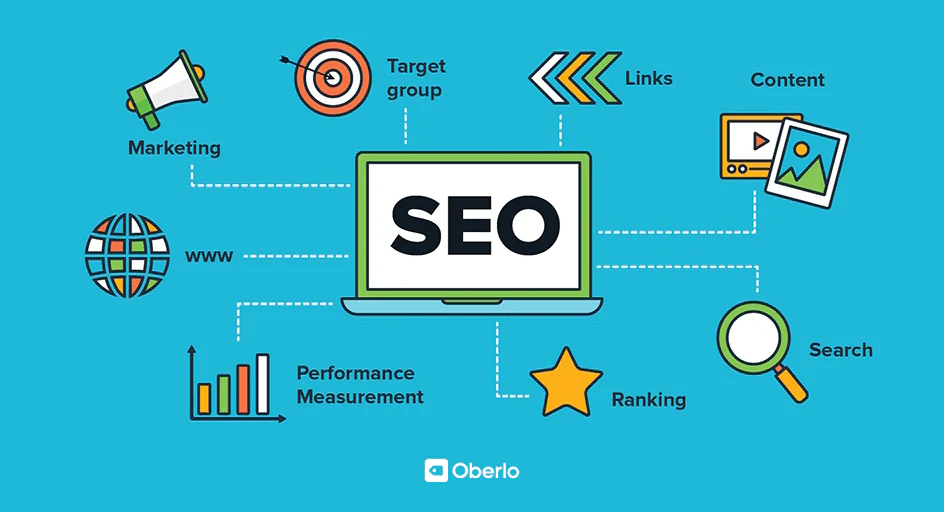Understanding the Role of Customer Experience in Modern SEO Practices
In an era where electronic existence can make or break a business, understanding the crossway in between customer experience (UX) and modern-day SEO methods is extra vital than ever before. As search engines develop, they significantly focus on internet sites that use smooth, engaging experiences to individuals. How do these elements specifically affect search rankings?
The Development of SEO
Over the years, the landscape of search engine optimization (SEARCH ENGINE OPTIMIZATION) has undertaken significant change, reflecting the vibrant nature of digital technology and individual actions. Search engine optimization was mainly concerning keyword padding and link-building strategies, focusing greatly on manipulating search engine algorithms to improve website positions. As search engines became a lot more innovative, these techniques began to shed performance and importance.

Additionally, mobile optimization and voice search have ended up being integral parts of SEO strategies. With the proliferation of smartphones, making sure web sites are mobile-friendly has become a need. Voice search, driven by digital aides like Siri and Alexa, has actually additionally shifted SEO techniques in the direction of natural language handling and conversational content.
In essence, the development of search engine optimization mirrors a wider fad in the direction of boosting customer complete satisfaction by aligning electronic content with the nuanced expectations of contemporary customers.
Trick UX Elements in SEO
In the realm of search engine optimization, crucial customer experience (UX) aspects are essential for improving both customer complete satisfaction and search engine rankings. Websites optimized for mobile usage not just foster a smooth user experience but additionally line up with Google's mobile-first indexing method.
Clear call-to-action (CTA) buttons lead customers towards preferred actions, enhancing conversion prices. Availability can not be ignored; guaranteeing that content is obtainable to users with impairments broadens reach and complies with web requirements. Incorporating these UX components successfully supports Search engine optimization initiatives by promoting customer retention and helping with search engine understanding of site material.
Influence of Site Rate
While frequently undervalued, the effect of site speed on customer experience and search engine optimization can not be overemphasized. In today's fast-paced digital atmosphere, users expect websites to pack quickly and successfully. Google has identified this demand, including site rate as a crucial ranking element in its search algorithms. A slow-loading internet site can cause raised bounce prices, as users are likely to desert a website if it takes greater than a few secs to tons. As a result, this not only affects individual engagement however likewise lessens the site's exposure in search engine results web pages (SERPs)
Additionally, website speed straight influences conversion rates and individual satisfaction. Study suggests that also a one-second hold-up in web page tons time can cause considerable decreases in consumer complete satisfaction and conversion probability. This emphasizes the need for services to focus on site speed optimization as part of their search engine optimization approach. Effective actions include maximizing images, leveraging web browser caching, and minimizing HTTP requests. By resolving these technological facets, sites can boost their speed, thereby boosting user experience and boosting their search engine optimization performance. Eventually, purchasing site speed is spending in both customer satisfaction and internet search engine exposure, important aspects in the electronic marketplace.
Mobile-Friendliness Relevance
Adapting to mobile-friendliness has actually ended up being an indispensable part of effective SEO techniques. As mobile devices increasingly control net use, online search engine like Google have actually changed in the direction of mobile-first indexing, indicating the mobile variation of a website is focused on in ranking formulas (seo adelaide). Mobile-friendliness is not merely a trend but a need in enhancing a site's search engine efficiency

As customers often browse for regional details on-the-go, having a mobile-optimized site boosts visibility in regional search results, driving foot website traffic and conversions for businesses. Web sites that fall short to focus on mobile-friendliness threat losing out on important web traffic, as individuals are much less most likely to involve with websites that are hard to browse on their mobile devices.
Enhancing Navigation for SEO
As companies identify the necessity of mobile-friendliness in SEO, another pivotal aspect emerges: enhancing navigation - seo adelaide. Effective navigation is essential as it directly influences user experience (UX), which online search engine progressively prioritize. A well-structured site guarantees that individuals can easily locate the web content they are seeking, reducing bounce prices and raising dwell time, both of which are essential search engine optimization metrics
To improve navigation, sites must adopt a sensible power structure that overviews users seamlessly through web content. This consists of clear, concise food selection tags and an user-friendly layout, which jointly enhance the individual journey. Using breadcrumb tracks can even more aid customers in comprehending their location within a website, cultivating a sense of orientation and control.
In enhancement to helping UX, streamlined navigation enables search engine spiders to index web content better, improving presence in search results. Applying interior linking methods can also strengthen search engine optimization by distributing web page authority and advertising content discoverability. Making certain navigation is receptive across gadgets warranties that users appreciate a consistent experience, necessary in today's multi-device world. Inevitably, boosting navigation is not simply concerning appearances; it is see this here a tactical technique to maximizing both user interaction and internet search engine performance.
Final Thought
Including customer experience right into modern-day search engine optimization techniques is extremely important for enhancing online search engine positions and boosting website performance. As search engines prioritize user intent, vital aspects such as site speed, mobile-friendliness, and intuitive navigation play a vital role in meeting individual expectations. By focusing on these facets, internet sites can lower bounce prices and boost interaction, aligning digital web content with customer requirements. This calculated positioning ultimately leads to boosted exposure and higher conversion prices in a significantly affordable digital setting.
In the realm of search engine optimization, vital individual experience (UX) components are vital for enhancing both customer complete satisfaction and search engine positions. Incorporating these UX elements successfully supports Search engine optimization initiatives by promoting customer retention and helping with search engine understanding of website content.
As customers frequently look for neighborhood details on-the-go, web having a mobile-optimized website enhances presence in local search outcomes, driving foot website traffic and conversions for companies.Including user experience right into modern-day SEO methods is extremely important for optimizing search engine positions and boosting website performance. As search engines focus on customer intent, crucial components such as website speed, mobile-friendliness, and user-friendly navigating play an essential role in meeting individual assumptions.